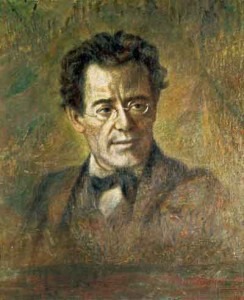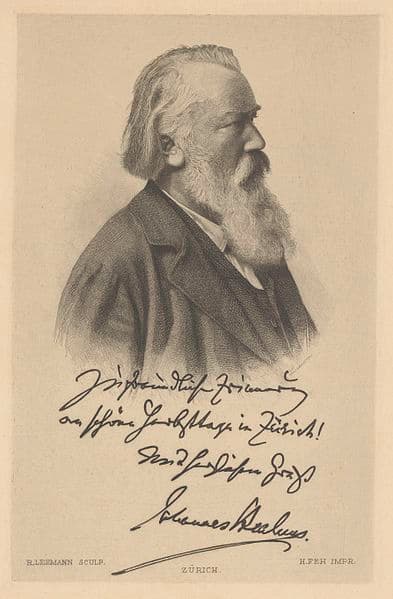
Gustav Mahler
Credit: http://www.rodoni.ch/
This cycle of five orchestral songs became one of his most personal and intimate musical expressions. Mahler radically departed from the folksongs and military marches of the earlier Wunderhorn settings, and immerses himself into a sound world of subtle shadings and nuances. He does not provide an evolutionary drama or narrative flow, but creates contrasting emotions of a confessional nature by employing a chamber orchestra capable of achieving transparent textures and ephemeral nuances.
The opening song “Nun will die Sonn’ so hell aufgeh’n” (Now the sun rises so brightly) presents a sunrise that brings no comfort. Rather, a pale atmosphere hangs over the song, hiding feelings of extreme grief. Two desolate meandering melodies—one in the oboe and the other in the horn—engage in counterpoint that is stripped bare of all extraneous elements. Conveying a sense of emotional restraint, a monotone vocal line haltingly emerges. The solo horn, in turn, provides a soulful response, almost pleading for compassion. Ending without a sense of closure, the ringing of the death peal in the harp and bells creates a sense of endless time. Becoming more animated, the vocal line continues with fragile variations on the opening phrase, before an agitated orchestral climax expresses the innermost emotions that the singer is unwilling to expose. The final stanza ironically juxtaposes a consoling text against a vocal line in the minor mode and the ringing of the death bell.

Friedrich Rückert
Credit: Wikipedia
Expressing parental delusions that the children are merely playing outside “Oft denk’ ich, sie sind nur ausgegangen!” (I often think they’ve just gone out), Mahler juxtaposes major and minor tonalities to contrast tragic reality with hopeful fantasy. The concluding song “In diesem Wetter” (In this grim weather) describes the raging storm of anguish on the day of the funeral, the violent grief of the father, and eventually a haven of eternal sleep. The music, unfolding in an asymmetrical formal structure summarizes the thematic, motific and rhythmic materials presented in the preceding songs. The pervasive calm of the other songs has vanished, as orchestral effects establish a turbulent and tortured atmosphere. This psychological storm offered in the orchestral prelude is intensified in each successive stanza of the text, reaching its climax—supported by kettledrums and gongs—at the beginning of the third stanza. Unexpectedly, the chime of the glockenspiel dispels the storm, and piccolo, harp and cello harmonics provide a beaming ray of radiant light. A gentle lullaby with rocking cadences ultimately provides consolation, as both children and parents have finally found peace.
Gustav Mahler: Kindertotenlieder


